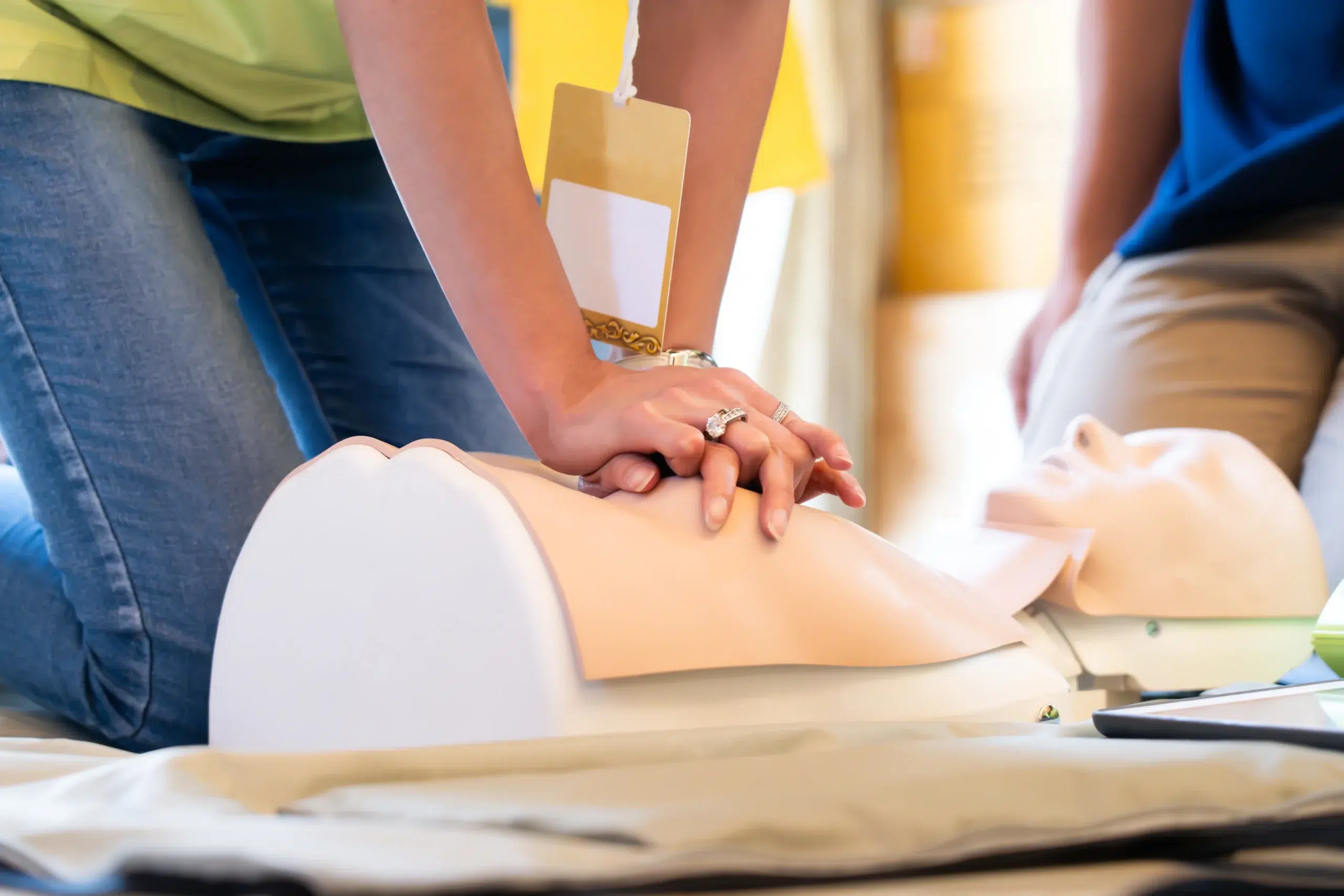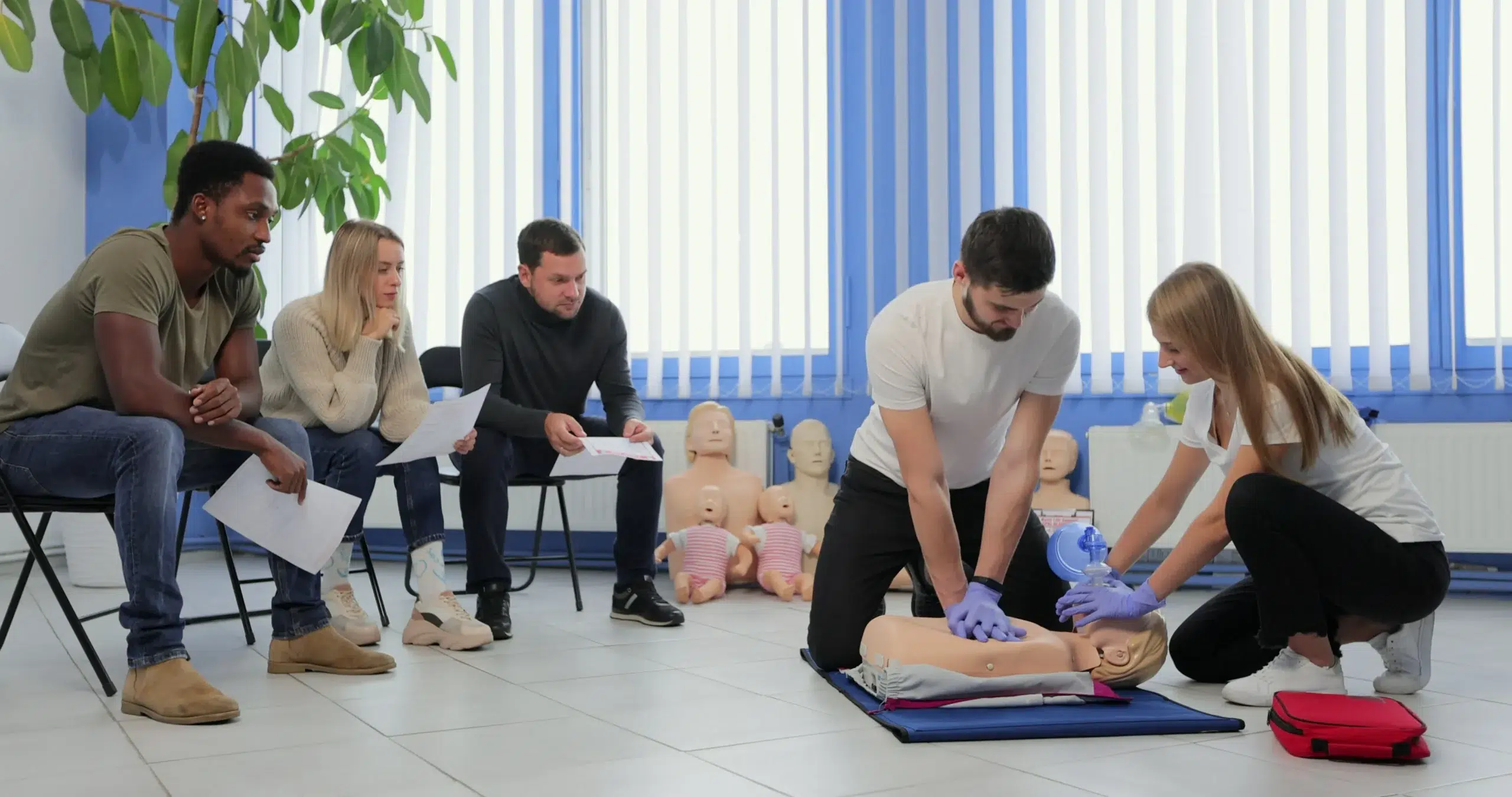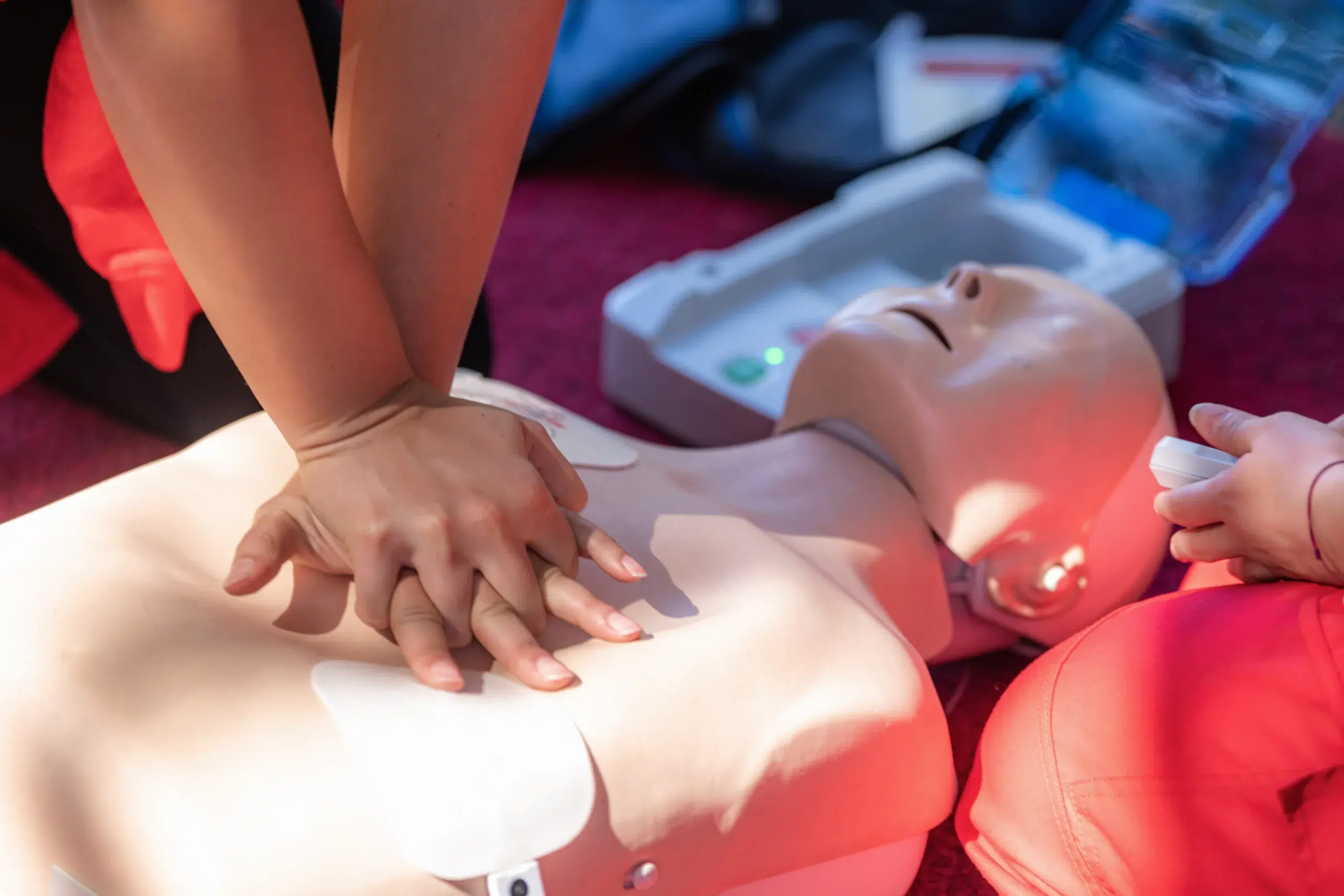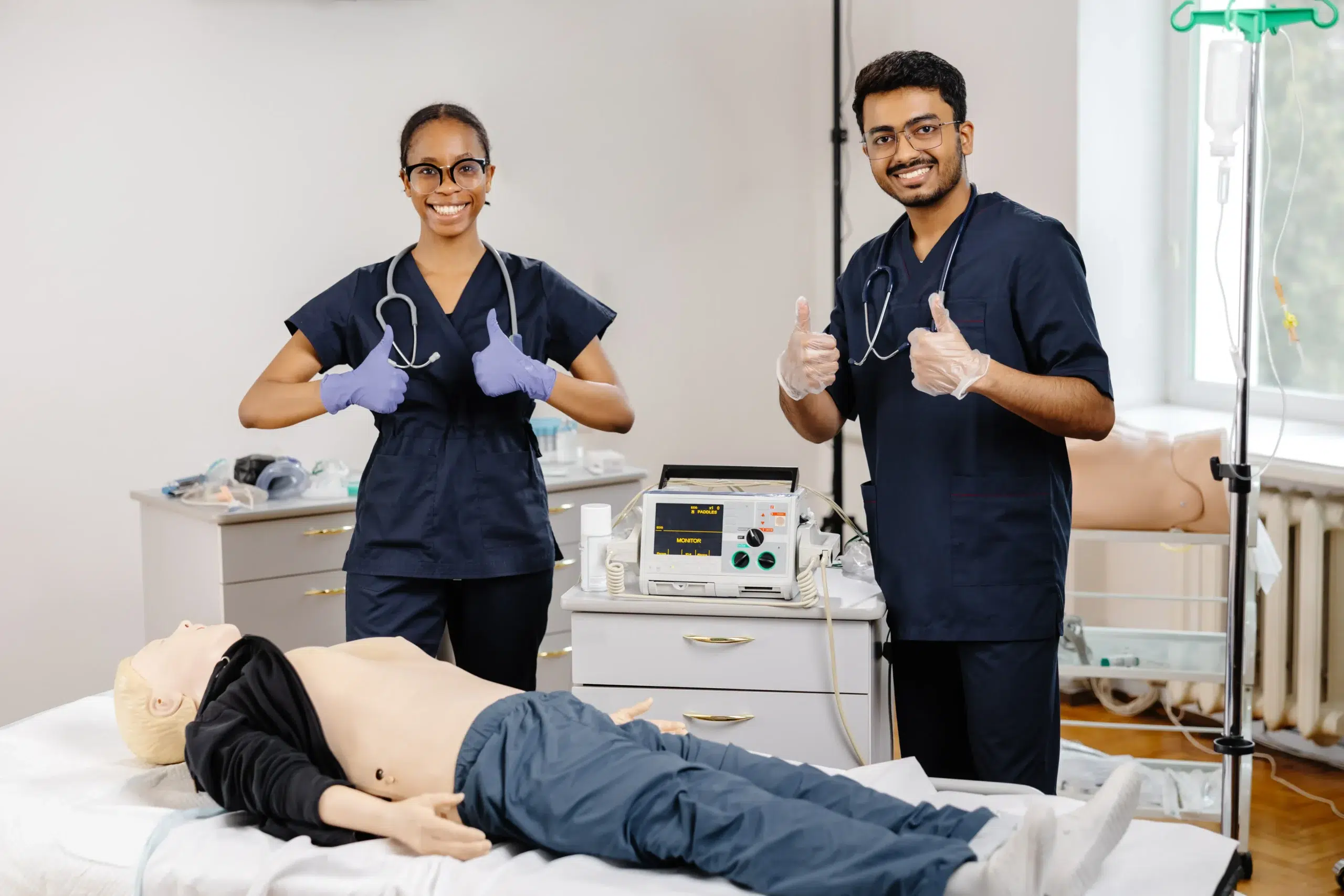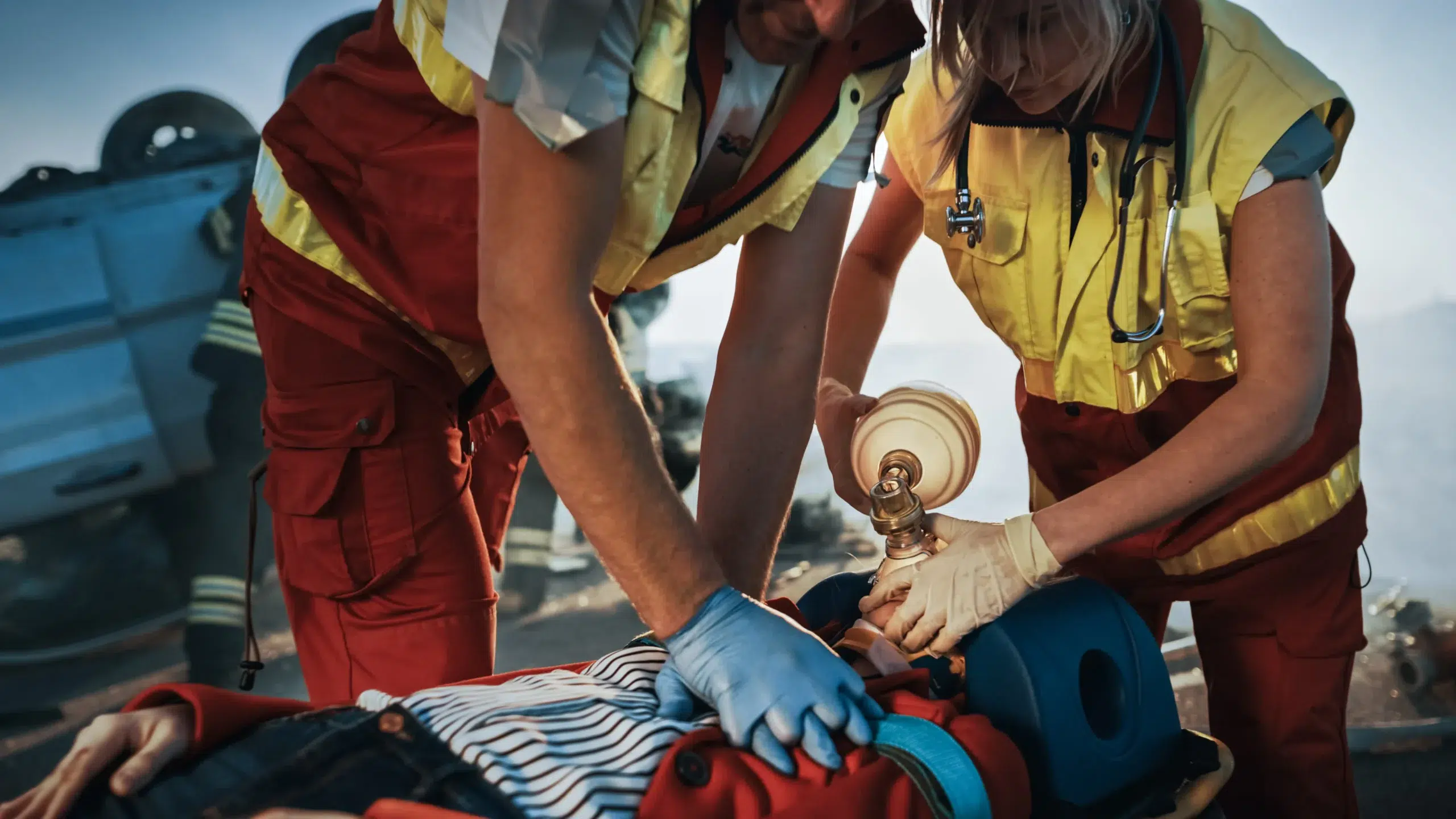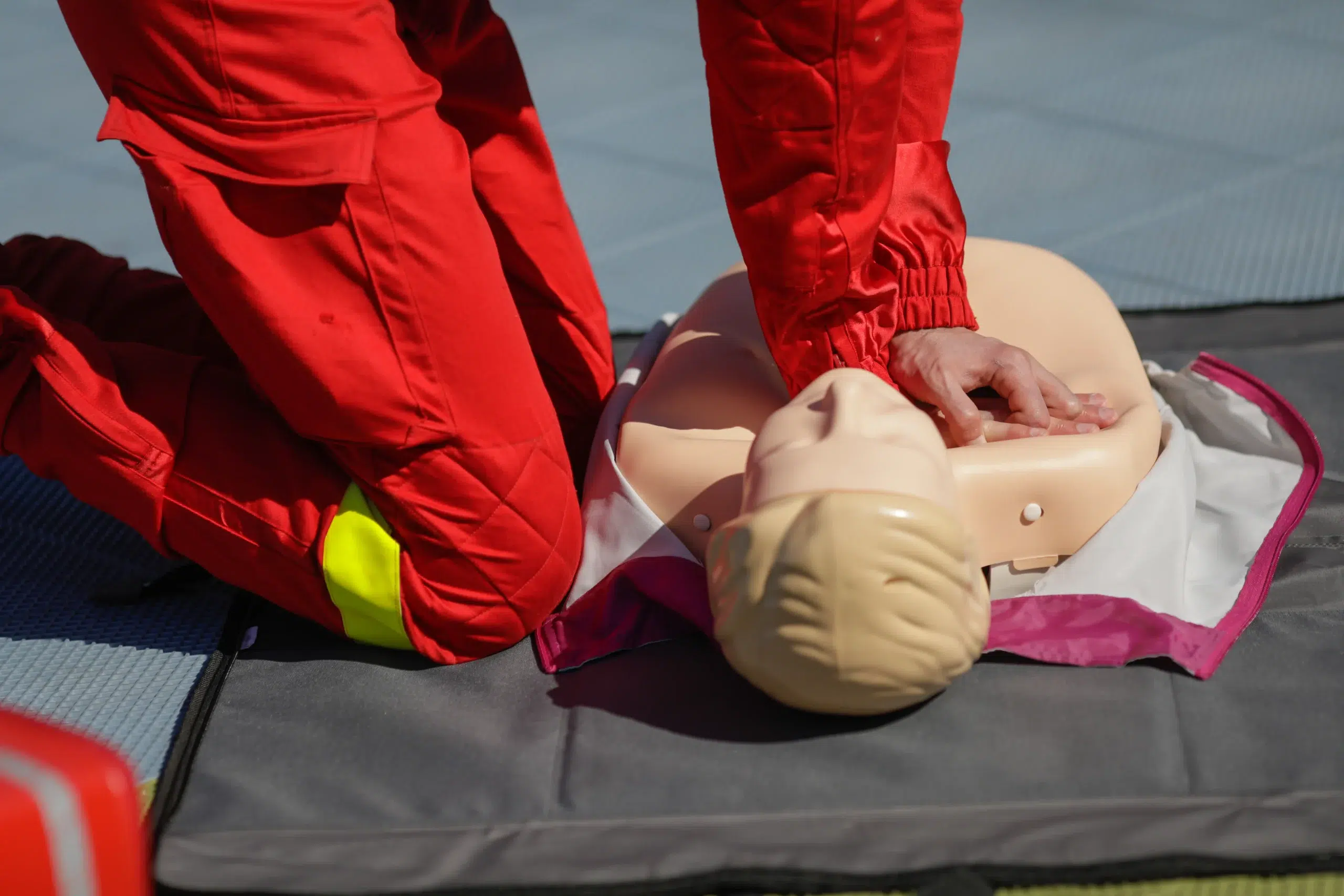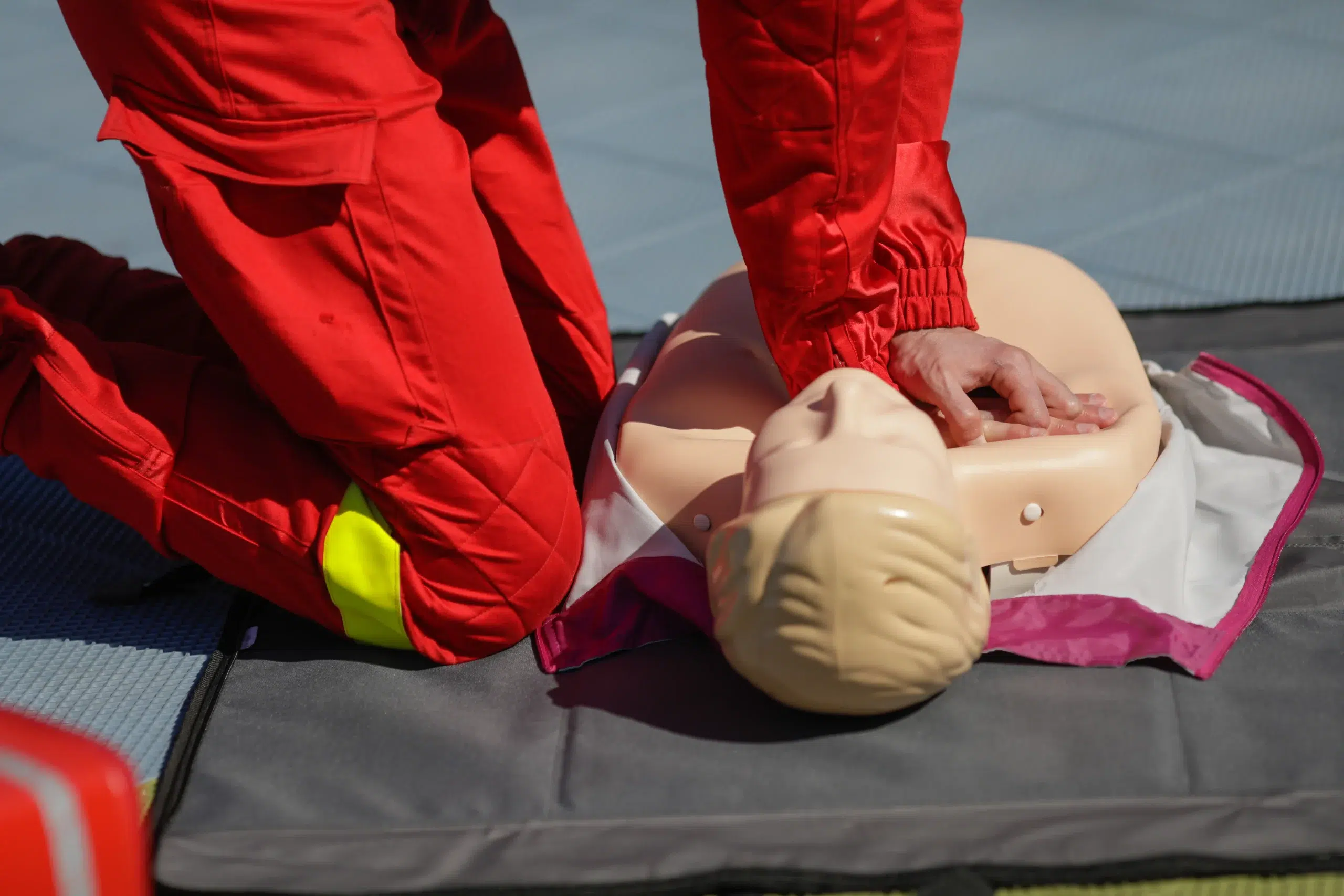Did you know that bystander CPR can double or even triple a person’s chances of survival during cardiac arrest? This powerful statistic highlights the importance of CPR training, especially in a bustling city like San Jose. This comprehensive guide will walk you through the essentials of CPR, from understanding its impact to finding the perfect San Jose CPR classes. We’ll also delve into some surprising CPR facts, including 25 things you don’t know about CPR, and debunk common myths that might be holding you back from learning this life-saving skill. Whether you’re a healthcare professional, a concerned parent, or simply someone who wants to be prepared, this guide is your starting point.
Key Takeaways
- CPR can save lives. Learning CPR, even just hands-only compressions, equips you to respond effectively during cardiac emergencies, significantly increasing the chances of survival.
- CPR training is accessible and flexible. Find a course that suits your needs and schedule, whether you’re a healthcare professional seeking BLS or ACLS certification or an individual wanting to learn the basics. Explore options like in-person classes, online modules, or blended learning.
- A CPR-trained community is a safer community. Become a vital link in the chain of survival by getting certified. Your skills can make a real difference in the lives of those around you.
What is CPR and Why It Matters?
CPR, or cardiopulmonary resuscitation, is a life-saving technique used when someone’s heart stops beating. It involves chest compressions and rescue breaths to circulate oxygenated blood to the brain and other vital organs. Learning CPR can empower you to make a real difference in a critical situation. Immediate CPR can dramatically increase the chances of survival during cardiac arrest. Studies show that bystander CPR can double or even triple a person’s odds of surviving cardiac arrest. Every minute without CPR lowers the chance of survival, so acting quickly is critical. Widespread CPR training within a community increases the likelihood of someone being ready to help during an emergency. This community preparedness can truly be the difference between life and death. Good Samaritan laws protect people who administer CPR, encouraging more people to help when needed. Knowing you’re legally protected can give you the confidence to act quickly and potentially save a life.
Surprising CPR Facts
CPR can significantly increase someone’s chances of survival after cardiac arrest. Learning CPR empowers you to make a real difference in your community. The more people trained in CPR, the higher the likelihood of immediate assistance during a cardiac emergency. This is especially important because professional help can take several minutes to arrive, and every minute without CPR decreases the chance of survival by about 10%, according to these CPR facts.
Even if you’re hesitant about rescue breaths, hands-only CPR using chest compressions can still be incredibly effective. It’s a simple yet powerful way to help until professional responders arrive. And don’t worry about legal ramifications; Good Samaritan laws generally protect those who offer assistance during an emergency. Finally, remember that CPR techniques are always evolving. Regularly updating your CPR training ensures you’re using the most effective methods. Consider registering for a CPR course in San Jose to stay up-to-date.
Debunking CPR Myths
It’s easy to misunderstand CPR if you haven’t taken a CPR class. Let’s clear up some common misconceptions about this life-saving technique:
Myth 1: CPR restarts the heart.
CPR doesn’t actually restart the heart. Instead, it manually pumps blood to the brain and other vital organs, buying time until paramedics arrive with advanced life support. Think of it as a temporary, manual support system keeping the body alive and minimizing damage.
Myth 2: You need to be certified to perform CPR.
While CPR certification is often a job requirement for healthcare professionals and other fields, you absolutely do not need to be certified to perform CPR in an emergency. If someone collapses and isn’t breathing, any attempt at CPR is better than none.
Myth 3: Only trained professionals can do CPR effectively.
Anyone can learn and perform CPR. The basic techniques are straightforward, and even hands-only CPR (compressions without rescue breaths) can be incredibly effective. Don’t let a lack of formal training stop you from helping someone in need.
Myth 4: You could hurt someone by performing CPR incorrectly.
It’s a common fear, but it’s virtually impossible to make someone’s condition worse by performing CPR, even if your technique isn’t perfect. In a cardiac arrest situation, the person is already clinically dead. Your efforts, however imperfect, offer their only chance of survival. CPR training gives you the confidence to act quickly and decisively.
Myth 5: CPR involves mouth-to-mouth resuscitation.
While traditional CPR includes rescue breaths, hands-only CPR—using only chest compressions—has been shown to be just as effective in many cases. If you’re hesitant about mouth-to-mouth, focus on delivering consistent, firm chest compressions. This can still significantly improve someone’s odds of survival. Learn more about hands-only CPR techniques through our CPR courses.
How CPR Works
CPR, or cardiopulmonary resuscitation, is a life-saving technique used when someone’s heart stops beating. It combines chest compressions and rescue breaths to maintain blood flow to the brain and other vital organs. Essentially, CPR acts as a manual pump for the heart, keeping oxygenated blood circulating until professional medical help arrives.
Chest compressions are the core of CPR. Each compression mimics the heart’s natural pumping action, squeezing the heart between the sternum and spine to push blood out into circulation. When you release the pressure, the heart refills with blood, ready for the next compression. Combined with rescue breaths that supply oxygen, these compressions create a vital, albeit minimal, level of circulation. To understand more about how CPR functions in these critical situations, check out these resources on life-saving techniques.
Effective CPR depends heavily on proper technique and timing. Aim for 100–120 compressions per minute—about the tempo of the song “Stayin’ Alive.” Each compression should be at least two inches deep for adults to ensure adequate blood circulation. Our San Jose CPR classes provide hands-on training in these techniques, building your confidence to perform CPR correctly. Because CPR can be physically demanding, switching with another trained person is important whenever possible to maintain the quality and consistency of compressions. The faster CPR is started after cardiac arrest, the better the chances of survival, particularly when combined with epinephrine, as highlighted in the 2023 BLS guidelines.
How to Perform CPR
Knowing how to perform CPR can help you save a life. While taking a CPR class offers the best preparation, understanding the basics can empower you to act in an emergency.
Giving Chest Compressions
CPR, or Cardiopulmonary Resuscitation, involves chest compressions and rescue breaths—or sometimes just compressions, known as “hands-only CPR.” The goal is to manually pump blood to vital organs when someone’s heart has stopped. The speed and depth of your chest compressions are crucial. Aim for a rate of 100–120 compressions per minute—think of the beat of the Bee Gees’ song “Stayin’ Alive”—and press down at least two inches for adults. Keep in mind that even with proper technique, CPR generates only about 20–30% of normal blood flow. Continue CPR until emergency responders arrive and tell you to stop, or until the person shows signs of recovery. For a deeper dive into CPR techniques, explore these CPR facts.
Giving Rescue Breaths
Rescue breaths deliver oxygen to someone who has stopped breathing. If you’re trained in CPR and comfortable giving rescue breaths, they are a valuable part of the process. However, if you’re hesitant or haven’t received this training, prioritize hands-only CPR (chest compressions only). It can still make a significant difference. CPR training resources often emphasize both compressions and breaths, but they also highlight the effectiveness of hands-only CPR when necessary.
Using an AED
An AED, or Automated External Defibrillator, can dramatically improve survival rates in cardiac arrest cases. These devices are user-friendly, designed for people with any level of medical experience. AEDs provide clear, step-by-step voice instructions. Using an AED within three to five minutes of a collapse can significantly change the outcome. Review the latest CPR guidelines to see how AEDs fit into the overall emergency response. Recognizing the signs of cardiac arrest, such as unresponsiveness and the absence of normal breathing, is the first step toward effective assistance.
CPR in Different Situations
CPR techniques can vary depending on who needs help and the specific circumstances. Let’s explore some of these variations.
Hands-Only CPR
If you’re unsure about giving rescue breaths, remember that hands-only CPR (chest compressions only) is still incredibly effective. The key is the speed and depth of your chest compressions. Aim for 100–120 compressions per minute (think of the beat of the Bee Gees’ song “Stayin’ Alive”) and a depth of at least two inches for adults. This steady, rhythmic pressure circulates blood to vital organs, buying precious time until professional medical help arrives. Learning hands-only CPR can empower you to act quickly and confidently in an emergency.
Infant and Child CPR
CPR for infants and children differs from adult CPR. The recommended compression depth for children and infants is about 1.5 inches, while the compression rate remains consistent at 100–120 compressions per minute. It’s essential to use gentler pressure because of the smaller size and delicate structure of young children and infants. Taking a specialized CPR course that covers pediatric techniques will give you the confidence to respond effectively in these situations.
CPR in Public
Performing CPR in public can feel intimidating, but remember that any attempt is better than none. Immediate CPR dramatically increases the chances of survival, potentially doubling or even tripling the odds. Bystander CPR helps circulate oxygenated blood, keeping vital organs functioning until paramedics arrive. Anyone can learn CPR—it’s a skill that empowers you to make a real difference. Find a local CPR class to gain the skills and confidence to act in an emergency.
Your Guide to San Jose CPR Classes
CPR classes equip you with the skills to respond confidently during medical emergencies. Whether you’re a healthcare professional, a concerned parent, or simply someone who wants to be prepared, understanding the different types of CPR certifications and what to expect can help you choose the right training. Safety Training Seminars offers a variety of CPR courses in San Jose to meet your specific needs.
Types of CPR Certifications
CPR certifications are tailored to different audiences and situations. Basic Life Support (BLS) certification provides foundational knowledge and skills in CPR for adults, children, and infants, along with training on airway management and rescue breathing. BLS is crucial for healthcare providers, first responders, and anyone working in a healthcare setting. Advanced Cardiovascular Life Support (ACLS) builds upon BLS, focusing on the advanced management of cardiac arrest and other cardiovascular emergencies. ACLS certification is typically sought by healthcare professionals who are part of resuscitation teams. Pediatric Advanced Life Support (PALS) concentrates on the specialized emergency care of infants and children. PALS, like ACLS, is geared towards healthcare providers who regularly treat pediatric patients. Many organizations offer combined CPR and First Aid certification, providing well-rounded training for both cardiac emergencies and common injuries. You can explore the different CPR and First Aid courses available at Safety Training Seminars.
What Happens in a CPR Class?
A typical CPR class blends instruction with hands-on practice. You’ll learn essential skills like performing chest compressions, delivering rescue breaths, and using an Automated External Defibrillator (AED). Instructors guide you through the proper techniques and provide feedback as you practice on mannequins. This practical training builds your confidence and prepares you to respond effectively in a real-life emergency. Most CPR certifications are valid for two years, and renewal courses are readily available to refresh your skills and stay up-to-date with the latest guidelines.
Choosing the Right CPR Class
Selecting the right CPR class depends on several factors. Consider your role: are you a healthcare provider, a childcare professional, or someone seeking general knowledge? Your profession may dictate the specific certification required. Think about your schedule and find a class that fits your availability. Safety Training Seminars offers daily CPR certification courses in San Jose to make scheduling easier. Also, consider your learning style. Do you prefer in-person instruction, online learning, or a blended approach? Evaluate your preferences and choose a format that best suits your needs. If cost is a concern, check out Safety Training Seminars’ low price guarantee.
Advanced CPR Skills and Certifications
BLS, ACLS, and PALS Certifications
Basic Life Support (BLS), Advanced Cardiovascular Life Support (ACLS), and Pediatric Advanced Life Support (PALS) certifications are crucial for healthcare providers and first responders. BLS provides the foundational skills needed for CPR, including chest compressions, rescue breaths for all ages, and airway management techniques. ACLS builds upon those BLS skills, offering more advanced training for healthcare professionals in managing cardiac arrest and other cardiovascular emergencies. PALS focuses specifically on the emergency treatment of infants and children, equipping healthcare providers with the skills to handle pediatric emergencies effectively. Safety Training Seminars offers these essential certifications to help you advance your career.
Specialized CPR for Healthcare Providers
Healthcare providers often require specialized CPR training tailored to their specific professional needs. Certification courses typically involve classroom instruction and hands-on practice, covering essential skills such as giving chest compressions, rescue breaths, and using an Automated External Defibrillator (AED). Most certifications are valid for two years, after which a renewal course is recommended to keep your skills current and ensure you’re up-to-date with the latest guidelines. Safety Training Seminars offers a range of CPR and first-aid training designed for healthcare professionals, including BLS, ACLS, PALS, and specialized CPR courses for medical, dental, and childcare providers. Our low price guarantee ensures you’re getting the best value for your training.
CPR’s Impact: Statistics and Real-Life Examples
CPR is more than just a skill; it’s a lifeline. Understanding its real-world impact can motivate you to learn this life-saving technique. Let’s explore some statistics and examples that highlight CPR’s significance.
How CPR Improves Emergency Outcomes
Immediate CPR dramatically increases survival chances after sudden cardiac arrest. Bystander CPR can double or triple the odds of survival. For every minute without CPR, a person’s chance of survival decreases by about 10%. About 22% of people who receive out-of-hospital CPR survive, which demonstrates its effectiveness in real-world emergencies. Early intervention makes a significant difference. Learn more about our CPR classes in San Jose and how you can be prepared.
When CPR Saves Lives
CPR is often needed in unexpected situations. You’re more likely to perform CPR on a family member or friend than a stranger, as most cardiac arrests happen at home. This fact emphasizes the importance of being prepared to act in a personal emergency. It’s also important to remember that doing something is always better than doing nothing. It’s impossible to kill someone by performing CPR incorrectly. When you find yourself in such a situation, continue CPR until emergency responders tell you to stop, or until the person starts showing signs of recovery. Our CPR and First-Aid courses equip you with the knowledge and confidence to act quickly and effectively. We also offer a low price guarantee, ensuring that these life-saving skills are accessible to everyone.
Be Prepared: CPR Training and Community Readiness
Knowing CPR can empower you to make a real difference in your community. It’s a skill that can quite literally save a life. But how can you find the right training, and what’s the impact of having more CPR-trained individuals around you? Let’s explore.
Find CPR Training
CPR combines chest compressions and rescue breaths to help someone whose heart has stopped. Learning CPR is easier than you might think, and the payoff is immense. Immediate CPR dramatically increases the chances of survival after cardiac arrest. In fact, bystander CPR can double or triple someone’s odds of surviving. If you’re in the San Jose, Santa Clara, or Sunnyvale area, you can find CPR certification courses through Safety Training Seminars.
Flexible CPR Learning
CPR training is designed to fit various schedules and learning styles. You can choose in-person CPR classes for hands-on learning with an instructor, or opt for the flexibility of online courses. Blended learning, which combines online modules with in-person skills practice, is also an option. This variety allows you to find the learning method that suits you best.
Build a CPR-Ready Community
Think about the power of a community where many residents know CPR. The more people trained, the higher the likelihood that someone can provide immediate assistance during a cardiac arrest. CPR significantly increases the chances of survival, especially outside of a hospital. By getting CPR certified, you become a vital link in the chain of survival, contributing to a safer and more prepared community.
Related Articles
- Why CPR is Important in Healthcare – San Jose CPR Classes
- The Science Behind Effective CPR: A Comprehensive Guide
- CPR Myths You Need to Stop Believing – San Jose CPR Classes
- CPR Classes in San Jose: Your Complete Guide – San Jose CPR Classes
- CPR Training in Santa Clara: Your Complete Guide – San Jose CPR Classes
Frequently Asked Questions
If someone needs CPR, but I’m not certified, should I still try to help? Absolutely. Don’t hesitate to act. Any attempt at CPR is better than none. Even hands-only CPR (just chest compressions) can significantly improve someone’s chances of survival. Remember, doing something is always better than doing nothing in a cardiac emergency.
What if I’m afraid I’ll do something wrong during CPR? It’s a natural concern, but it’s highly unlikely you’ll worsen someone’s condition during cardiac arrest. They are already in a life-threatening situation. Your action, even if imperfect, offers their best hope. Focus on providing consistent chest compressions – that’s the most critical part.
How do I know if someone needs CPR? Check for responsiveness – gently shake the person and ask if they’re okay. If they don’t respond and aren’t breathing normally (or at all), they likely need CPR. Look for signs like a bluish tint to their skin, especially around the lips and fingertips.
What’s the difference between BLS, ACLS, and PALS? BLS (Basic Life Support) provides foundational CPR skills for everyone. ACLS (Advanced Cardiovascular Life Support) is more advanced, geared towards healthcare professionals managing complex cardiac emergencies. PALS (Pediatric Advanced Life Support) focuses on the specific needs of infants and children during emergencies.
Where can I find CPR training near me? If you’re in or near San Jose, California, Safety Training Seminars offers a range of CPR courses, including BLS, ACLS, and PALS. They provide flexible scheduling options, including daily classes, and a low price guarantee. Check their website for more information and to register for a class.


